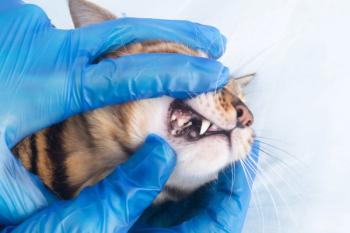
Functional occlusion: I'm OK, but are your patients, really?
I hung up the receiver after explaining to one of my clients why his "normally" undershot Shih Tzu's maxillary incisors needed be removed because they were penetrating the mandibular gingiva.
I hung up the receiver after explaining to one of my clients why his "normally" undershot Shih Tzu's maxillary incisors needed be removed because they were penetrating the mandibular gingiva.
How could this perfectly "normal" dog be abnormal?
A book I read many years ago, titled "I'm OK, you're OK" (Thomas A. Harris, 1973) seemed to apply to breeds and the problems unique to each animal. Harris theorized there are four types of relationships between people or organizations:
- I'm OK, you're OK. Both parties are normal and functioning well.
- I'm OK, you're not OK. You or your organization is well but the opposite party is not. It will create problems that need attention.
- I'm not OK, you're OK. You or the organization has the problem. The opposite side is fine and expected to stay that way.
- I'm not OK, you're not OK. Both sides have significant problems that interfere with their relationship.
How does this apply to orthodontics?
As soon as you find an orthodontic abnormality, you first need to determine if it is a functional problem. Can the dog or cat expect to live a pain-free life if nothing is done to correct the problem? If the answer is yes, then the abnormality should be followed in the future to make sure it does not revert. If the answer is the condition is non-functional, then the tooth or teeth needs to be removed or repaired.
Let's apply some of these orthodontic conditions to the I'm OK, you're OK theory:
Fully functional
There are three types of head types: mesocephalic (also called mesaticephalic) typical of Beagles, terriers, German Shepherds, where the caudal surface of the maxillary incisors just touch the rostral surface of the mandibular incisors (Photos 1, 2 and 3), brachycephalic found in flat nose breeds (Bulldogs, Pugs, Persians) where the maxillary incisors are behind the mandibular incisors and do not touch them (Photos 4, 5 and 6); and the dolichocephalic or long- and narrow-faced breeds typified by the Greyhound, Saluki and Siamese, where there is a scissor bite and a longer muzzle compared to the mesocephalic breeds (Photos 7, 8 and 9). Even though brachycephalic mouths do not look normal, they are functional and if maintained properly will not cause the dog or cat pain or disease.
Normal for breed but not functional
In this situation, the dog or cat has a normal bite as called for in American Kennel Club breed standards (
Functional; no therapy indicated
Here the dental or skeletal malocclusion is abnormal but there is no apparent cause for alarm because damage is not occurring or destined to occur. In most cases of mandibular brachygnathias (mandibular distoclusion, overbite, overjet) the mandibular canine penetrates into the maxillary gingiva necessitating intervention.
Some dogs have such a marked mesioclusion that the maxillary canines are so rostral that the mandibular canines functionally fit caudally behind the mandibular canine (Photo 12). Other examples would be a dog with a long muzzle with a supernumerary first premolar not interfering with adjacent teeth.
Orthodontic problems, requiring treatment
This is the most-common orthodontic presentation to the veterinary dentist. Something is wrong that needs attention. Lingually displaced mandibular (base narrow) canines (Photo 13), tooth crowding (Photo 14), rostroverted (mesioverted) canines (Photo 15), rostral and caudal crossbites (Photos 16 and 17) are common conditions. The offending teeth either need to be moved or removed to prevent recurring injury. Orthodontic movement requires a compliant patient, an owner with realistic expectations and a veterinarian who understands the science behind tooth movement.
As veterinarians, our role is to help our patients live long and pain-free lives. Orthodontics is an exciting part of dental practice. Every dog and cat is not entitled to a perfect bite, but through our attention to detail and response to abnormal orthodontic findings, our patients can have a comfortable one.
Jan Bellows
Dr. Bellows owns Hometown Animal Hospital and Dental Clinic in Weston, Fla. He is a diplomate of the American Veterinary Dental College and the American Board of Veterinary Practitioners. He can be reached at (954) 349-5800; e-mail:
Newsletter
From exam room tips to practice management insights, get trusted veterinary news delivered straight to your inbox—subscribe to dvm360.





